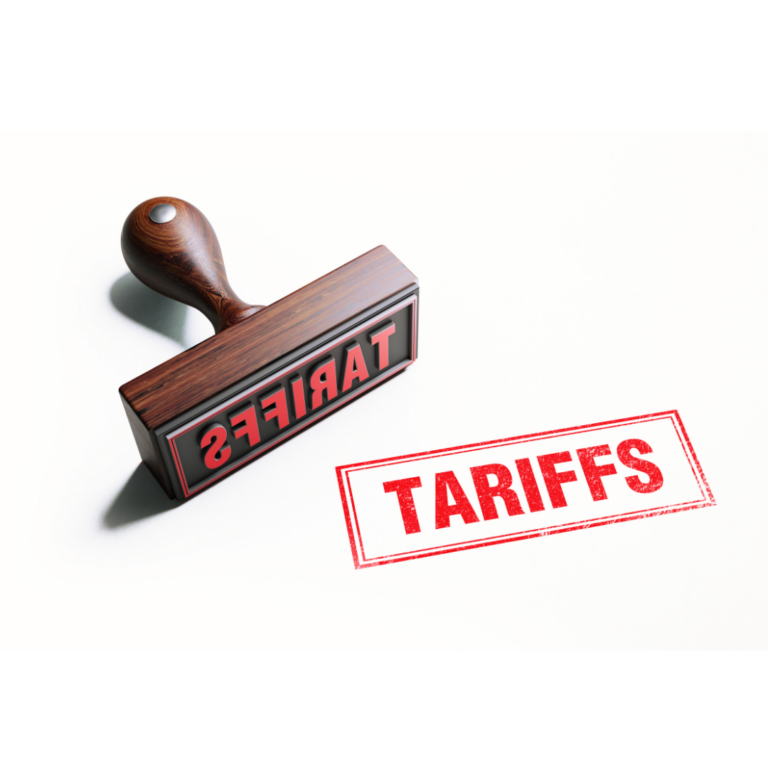How to Effectively Manage Your Taxes and Pay Yourself First

As the cost of everything from groceries to gas goes up, many Americans are feeling the pressure of rising inflation. But there’s good news. You may be able to profit from rising inflation in the following three ways:
1 . Your Social Security Increase
The Social Security Administration is increasing cost of living adjustment (COLA) payments by 8.7% in 2023 to move with current inflation. Even if you’re not collecting social security right now that cost of living increase does effect your future benefits. For example, the 2022 full retirement age maximum benefit was $3345 it jumped to $3627 for 2023. For those collecting at 67, who live to the age of 90 their collecting an extra $82,000 during their retirement.
2. Better deductions for everyone
The IRS has increased the amount of the standard deduction and expanded the tax brackets. This means you could potentially paying less in taxes even if you made a little more money. The income for exemption from Alternative Minimum Tax is higher and phases out at a higher income too.
3. Increased contribution limits
The IRS has also increased the amount you can contribute to your retirement plans and health savings accounts, as well as the income phase-out for Roth IRAs.
Key questions to ask yourself include:
- If I’m at my full retirement age, how does the increase in Social Security benefits affect my retirement plan?
- How can I take advantage of high inflation?
- How will increasing my retirement contributions help lower my 2023 taxes?
- Do I have a financial professional who can help me discover how rising inflation can help me build my wealth?
As a high-income earner, the tax deduction for your retirement contributions is extremely valuable in helping you lower your taxes every year. But this money is fully taxable on withdrawal, so what happens when you start taking it out after retirement?
Given all the uncertainty, 2023 could be a great year for converting some of your pretax retirement money in a 401(k) or IRA into a Roth. Conversion makes sense when:
1. Your income drops during the year.
2. You believe taxes will be higher by the time you retire.
3. If you are retired you may want to start converting some of your pre-tax retirement assets before you are required to take your RMD’s to smooth out your tax brackets or pre-pay some of the income tax for your beneficiaries.
4. You want to “fill up” your expanded tax bracket because you think your taxes will be higher in the future.
If your 401(k) or similar employer retirement plan allows, you could even be eligible for a “backdoor Roth” where you add after-tax money to your pretax plan and immediately convert it to a Roth. Between your salary deferrals, employer match, catch-up contributions, and after-tax money, you’re allowed to contribute up to $66,000.
Key questions to ask include:
- Am I in a good position to convert some pretax money to after-tax money this year?
- How close am I to “filling up” my current tax bracket, and do I have room for conversions?
- How much tax savings disappear if I don’t take advantage of them before I file?
- Does my employer retirement plan allow me to make after-tax contributions after I max out my salary deferrals?
You might be able to discover buried tax savings by bundling your deductions. Tax deductions that wealthy people have relied on for years such as state and local tax deductions, including mortgage interest and charitable deductions, were seriously cut back through the TCJA of 2017.
Now that the standard deduction is higher for 2023 ($27,700 if you’re married and filing jointly), you’ll need to be thoughtful about deductions that you can bundle to be able to itemize, like:
1. Charitable deductions: Pack several years of donations together and make sure you get receipts.
2. Unreimbursed medical expenses: Consider accelerating or grouping medical procedures to help get over the 7.5% AGI floor in the same tax year.
3. Mortgage interest and home equity lines of credit: Interest is deductible up to $750,000 in borrowing and potentially more depending on when you took your mortgage out.
Key questions to ask include:
- Do I have expenses like property taxes and medical costs that I can bundle into this year along with my charitable contributions?
- Should I consider paying down my mortgage instead of adding more money to my taxable brokerage account?
- What deductions am I potentially missing out on?
Some types of assets perform better in one type of account over another. Investing your assets with purpose can potentially help you lower your tax bill.
Here are some examples of what this tax-saving strategy can look like:
1. If you have an employer retirement plan: If your plan allows, why not max out after-tax contributions?
2. If you’re self-employed or own your own business, make sure you have the right retirement plan. 401(k)s, SEP, and SIMPLE IRAs have different tax-deductible options.
3. 529 college savings plans: They’re not just for college kids, and you can be the beneficiary and the owner to capture tax-free withdrawals. More and more states are now offering state income tax deductions for contributions including NJ, MA and CO to name a few.
4. If you have a high deductible health care plan, you can leverage HSAs to cover medical expenses and invest for the future.
It’s critical to extract as many tax deferral opportunities as possible from your investments before you file AND before lawmakers eliminate the tax advantages of each strategy.
Key questions to ask include:
- Are my investments in the right accounts to maximize tax savings?
- Am I able to add more after-tax money to my employer-sponsored retirement plan?
- If I own my own business, is my retirement plan suited to my needs?
These tips are advanced and complex techniques that could help you wring every opportunity out of this tax year, but you need to be careful and coordinate your tax strategies in the context of your overall financial plan.
Here are some examples of what this tax-saving strategy can look like:
1. Take some of your capital gains off the table: If your portfolio strategy supports it, you may want to consider selling assets that have gained value to lock in your gains.
2. Realize capital losses: If you have assets in your portfolio that no longer fit your goals, selling them and realizing the losses will allow you to offset some or all of your gains. Details matter a lot here, so be sure to get advice on matching short– and long-term gains and losses.
3. Convert Traditional retirement money to Roth: Roth conversions reduce the amount of Traditional money that you’re forced to take RMDs on, plus the money comes out tax-free on withdrawal as long as you play by the rules.
4. Characterize income as capital gains: Take advantage of current low capital gains tax rates, especially with things like employer stock options.
These hidden tax-saving opportunities can help you build wealth, but be conscientious. You could create an explosive financial disaster if they aren’t carried out with awareness of the parameters and laws surrounding them. We strongly recommend scheduling an appointment with us to see how these strategies fit into your holistic financial plan.
Key questions to ask include:
- Should I convert some traditional pre-tax money into a Roth, or take capital gains from my taxable account?
- Are there any opportunities to shift income from ordinary to capital gains?
Recent legislation changes found in the Inflation Reduction Act:
1) Electric Vehicles tax credits
You may qualify for a credit up to $7,500 under Internal Revenue Code Section 30D if you buy a new, qualified plug-in EV or fuel cell electric vehicle (FCV). The Inflation Reduction Act of 2022 changed the rules for this credit for vehicles purchased from 2023 to 2032.
The credit is available to individuals and their businesses.
To qualify, you must:
1) Buy it for your own use, not for resale
2) Use it primarily in the U.S.
In addition, your modified adjusted gross income (AGI) may not exceed:
- $300,000 for married couples filing jointly
- $225,000 for heads of households
- $150,000 for all other filers
2) Energy tax credits for home efficiency upgrades
$600 for exterior windows and skylights; central air conditioners; electric panels and certain related equipment; natural gas, propane, or oil water heaters; natural gas, propane, or oil furnaces or hot water boilers; $2,000 for electric or natural gas heat pump water heaters, electric or natural gas heat pumps, and biomass stoves and boilers (for this one category, the $1,200 annual limit may be exceeded).
This is in addition to any benefit your specific state may provide.
Breakwater Capital Group can help you make sure you are extracting as much value from these current opportunities as possible.
Sources
1 – https://www.usinflationcalculator.com/inflation/current-inflation-rates/
2 – https://www.taxpolicycenter.org/briefing-book/how-did-tax-cuts-and-jobs-act-change-personal-taxes
3 – https://www.ssa.gov/cola/
4 – https://www.irs.gov/newsroom/irs-provides-tax-inflation-adjustments-for-tax-year-2023/
5 – https://www.irs.gov/newsroom/401k-limit-increases-to-22500-for-2023-ira-limit-rises-to-6500
6 – https://www.irs.gov/pub/irs-drop/n-22-55.pdf
7- Inflation Reduction Act of 2022 | Internal Revenue Service (irs.gov)
Disclosures
Risk Disclosure: Investing involves risk including the potential loss of principal. No investment strategy can guarantee a profit or protect against loss in periods of declining values. Past performance does not guarantee future results. This material is for information purposes only and is not intended as an offer or solicitation with respect to the purchase or sale of any security. The content is developed from sources believed to be providing accurate information; no warranty, expressed or implied, is made regarding accuracy, adequacy, completeness, legality, reliability, or usefulness of any information. Consult your financial professional before making any investment decision. For illustrative use only. This information is not intended to be a substitute for specific individualized tax advice. We suggest that you discuss your specific tax issues with a qualified tax professional. Guarantees are backed by the financial strength and claims-paying ability of the life insurance company. The enclosed content is for informational purposes only, you should not construe any such information or other material as legal, tax, investment, financial, or other advice. Nothing contained within constitutes a solicitation, recommendation, endorsement, or offer by Breakwater Capital to buy or sell any securities or other financial instruments or offering in this or in in any other jurisdiction. You alone assume the sole responsibility of evaluating the merits and risks associated with the use of any information contained within before making any decisions based on such information. Additional information, including management fees and expenses, is provided on our Form ADV Part 2, available upon request or at the SEC’s Investment Adviser Public Disclosure website.

Breakwater Team
At Breakwater Capital, we work with families across the United States, providing each client with a personalized experience tailored to their current circumstances, future goals, and timelines.











